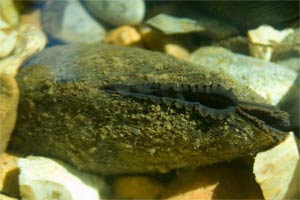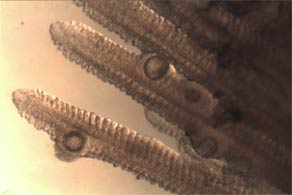Monitoring Conditions for the Freshwater Pearl Mussel Margaritifera Margaritifera
Abstract
The freshwater pearl mussel Margaritifera margaritifera is now becoming an endangered species due to a number of factors including siltation, acidification, pearl fishing and tramplings.
Equipment Used
Multi-parameter water quality monitor with pressure, dissolved oxygen, temperature, conductivity and pH/ORP sensors
Background
 The Freshwater Biological Association is part of a collaborative project with Natural England and the Environment Agency for England and Wales, to try and save relic populations before they become extinct. Therefore the Freshwater Biological Association is now housing several populations of the freshwater pearl mussels with an aim to breed them. The UK is now the last remaining stronghold for the species and as such, much is being done to try and save the diminishing populations.
The Freshwater Biological Association is part of a collaborative project with Natural England and the Environment Agency for England and Wales, to try and save relic populations before they become extinct. Therefore the Freshwater Biological Association is now housing several populations of the freshwater pearl mussels with an aim to breed them. The UK is now the last remaining stronghold for the species and as such, much is being done to try and save the diminishing populations.
Captive breeding is often a last resort to try and save populations that are not recruiting successfully or where numbers have become critically low. A small number of adult freshwater pearl mussels have been brought to the FBA headquarters, on the shore of Windermere, in an attempt to breed from them and reintroduce the offspring into their native catchment, when they have reached maturity.
It is important for the FBA to log the conditions of the water in the strongholds to ensure that water conditions are suitable for the Margaritifera margaritifera to live and breed in.
A Multi-Parameter water quality meter will be used to monitor and record water conditions that the adult mussels are being kept in. The temperature of the water is particularly important for reproduction in the freshwater pearl mussel so an accurate temperature reading will be taken several times a day to accurately predict the timing of important reproductive events.
The results of these tests will help to ensure that optimum water conditions are kept for the freshwater pearl mussels.

Above. The larval stage of the pearl mussels which parasitise the host fish.
